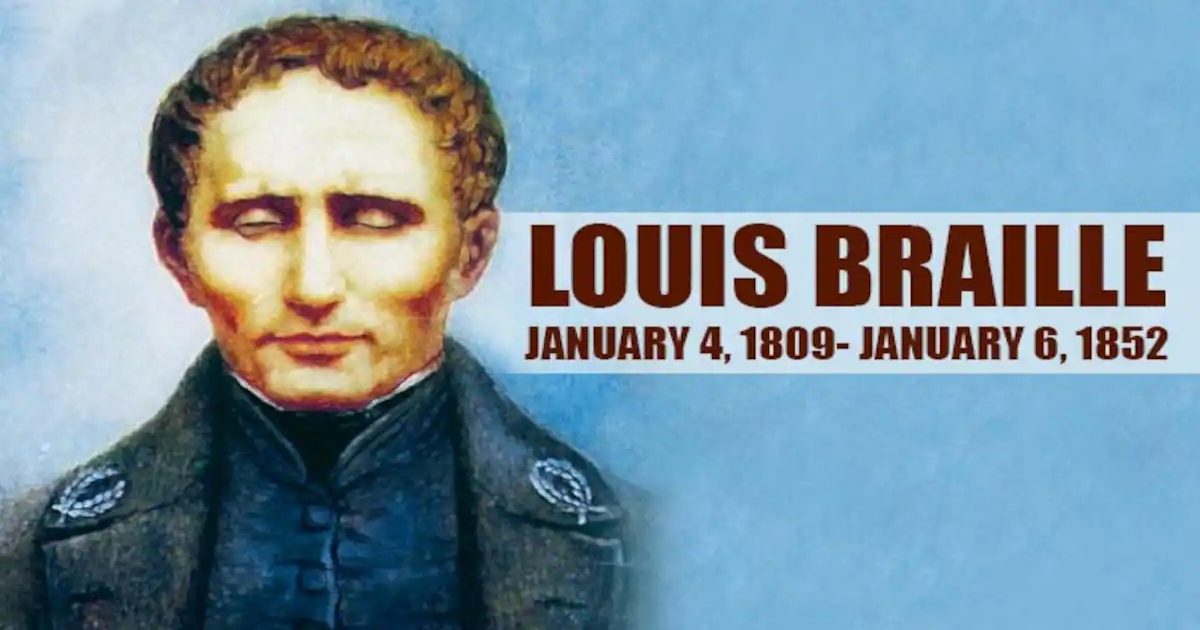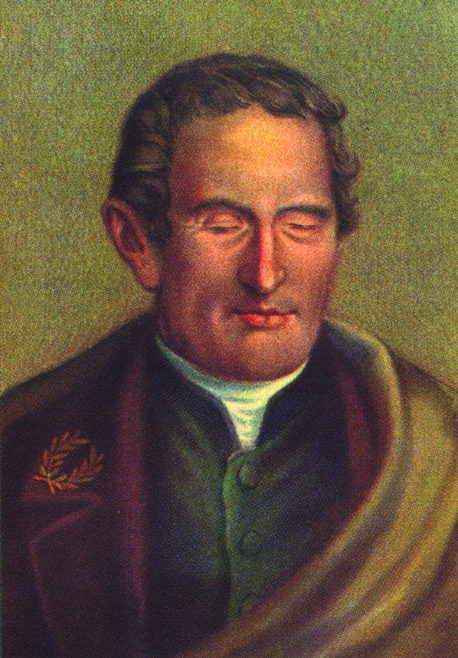
We celebrate the life of Louis Braille every January with National Braille Literacy month! Read more about his life and the creation of the braille code.
Six dots — six bumps in different patterns spreading out over the page. What are they? Numbers, letters, words that make up stories, music, math, science — nearly anything that can be written! Who created this incredible code that allows people who are blind to both read and write? None other than Louis Braille (1809-1852), a French teenager who was blind and wanted very much to learn.

Louis was from a small town called Coupvray, near Paris—he was born on January 4 in 1809. Louis became blind by accident, when he was 3 years old. Deep in his father’s harness workshop, Louis tried to be like his dad, but it went very wrong. He grabbed an awl, a sharp tool for making holes in leather and the tool slipped hurting his eye. The wound got infected, and the infection spread. Soon, Louis was blind in both eyes.
Suddenly, Louis needed a new way to learn. He stayed at his old school for two more years, but he couldn’t learn everything just by listening. Things were looking up when Louis received a scholarship to the Royal Institution for Blind Youth in Paris when he was 10. But even there, most of the teachers just talked at the students. The library had only 14 huge books with raised letters that were very hard to read—and there was no way for Louis to write.
In 1821, a former soldier named Charles Barbier visited the school. Barbier shared his invention called “night writing,” a code of 12 raised dots that let soldiers share top-secret information on the battlefield in the dark. The code was hard for the soldiers to learn, but not for 12-year-old Louis!

Louis reduced the number of dots in each character from Barbier’s 12 dots to 6 dots. This allowed all of the dots that made a single character to be touched at once with the fingertip.
Louis continued to improve the system, which was mostly completed by the time he was 15. Louis published the first-ever braille book in 1829, which described his method of reading and writing.
But did he stop there? No way! In 1837, he added symbols for math and music. The students loved Louis’ new code, but it took the teachers and directors at the Royal Institution many years to accept it. Louis himself taught at the Royal Institution, but braille wasn’t taught there until after his death. Braille began to spread worldwide in 1868, when a group of British men, now known as the Royal National Institute for the Blind, took up the cause.
Now practically every country in the world uses braille. Braille books have double-sided pages, which saves a lot of space. Braille signs help people who are blind get around in public spaces. Computerized devices with changing refresh-able braille displays can connect to smartphones or computers. And most importantly, blind people can communicate independently.
